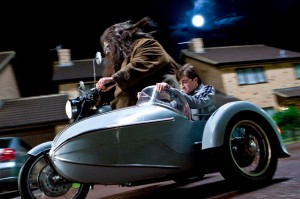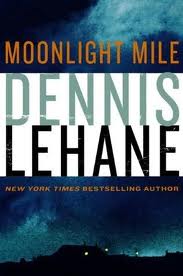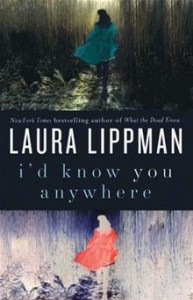Last Saturday, I saw the Coen brothers’ remake of True Grit (opening Dec. 22), about a U.S. Marshal who helps a young girl avenge her father’s murder, with my friend Eric Edwards, who had re-watched the original John Wayne version recently. I’ve only seen parts of that movie so I thought we’d have a conversation about the two versions instead of my usual review.
PCN: What did you think of the new version?
Eric Edwards: I think it’s much edgier and grittier.
PCN: So, it lives up to its title more? The characters are literally grittier here. Jeff Bridges’s Rooster Cogburn is much more unkempt than John Wayne’s. I remember Wayne always looked pulled together, with his little bandanna tied neatly around his neck. Bridges looks like he smells.
EE: But I think that’s more realistic.
PCN: How did you like his Cogburn compared to Wayne’s?
EE: I thought Bridges made it his own. He didn’t try to put on any kind of John Wayne swagger. He just played a hard-ass who’s gone to seed and did it believably.
PCN: I thought he chewed scenery in parts and sometimes his performance resembled The Dude more than The Duke. But he eventually won me over and after a while, I stopped thinking about John Wayne in that role.
EE: I was happy to lose both Glen Campbell as La Boeuf and his song on the soundtrack.
PCN: Oh, man, Campbell was pretty hammy. Matt Damon did a much better job as the Texas Ranger.
EE: I thought both Damon and Bridges adopted some kind of speech impediment for their roles. Bridges sounds like he had at least three marbles in his mouth at all times and Damon sounds as though he was wearing a set of false teeth over his regular teeth.
PCN: I didn’t notice that. I just thought they slurred their words because Cogburn was drunk most of the time and La Boeuf had that unfortunate accident with his tongue.
EE: But you could still understand them for the most part, which is no easy feat, considering the old-fashioned type of dialogue.
PCN: The dialogue stayed pretty true to the original’s. I think some of the lines were verbatim from the previous version.
EE: I’d say about fifty percent is verbatim from the old version, and the rest seems to be more authentic to the way people spoke in that time period. In the ’69 movie, the speech was more conversational overall.
PCN: I can’t believe that 14-year-old actress, Hailee Steinfeld, who played Mattie, could handle all that dialogue! Not only was there a lot of it, it wasn’t colloquial at all. That scene when she’s bargaining with Colonel Stonehill seemed like twenty pages but she plowed through it like a champ.
EE: I kind of had a problem with her. I liked her spunk but at no time did I feel she was mourning her dad. I didn’t think she had a full character arc.
**Spoilers**
PCN: That was one thing that bothered me, too. I loved how scrappy and no-nonsense Mattie is but I never saw her affected by all the gritty stuff that was happening around her. She saw a man’s head blown off only a few feet from her, another one stabbed to death, she encountered a corpse still hanging from a tree, and she watched her horse get shot. All that would traumatize anyone, more so a young girl, I’d imagine. I would be freaking out but she remained placid throughout.
**End spoilers**
EE: In the original, there’s this scene I liked where Mattie, played by Kim Darby, had a quiet moment and was allowed to grieve for her father behind closed doors. It shows the heart of the character, that she’s not just plucky for pluck’s sake. She has some vulnerability; she’s just not gonna show it to the men around her. And I appreciated seeing that.
 PCN: What did you think of Josh Brolin as Tom Chaney?
PCN: What did you think of Josh Brolin as Tom Chaney?
EE: I thought he was funny. It was entertaining to watch him play evil and dumb at the same time.
PCN: I’m really enjoying the work he’s doing and where his career is going. He has really matured as an actor. So, do you think this movie needed to be remade?
EE: At first, I thought no, but I really liked what the Coens did here. They made it darker and a little scary. The original had bright colors and scenery and looked Disney-esque at times. Even the night scenes were well lit. Here, everything is in shades of brown and black, there’s snow and rain and you feel the cold coming off the screen.
PCN: What did you think of the framing device of Mattie as an adult and doing voiceover? Did it add anything to the remake?
EE: I thought it made it more powerful because it hammered home the point this was an adventure with real danger and real consequences, not some cute romp through the countryside.
PCN: I didn’t think the original was “cute” but Mattie did come off girlier while this new Mattie is dead serious. And she certainly comes out of it worse for wear. I’m just glad a Coen-brothers movie had an ending. A Serious Man pissed me off.
EE: Yeah, maybe [executive producer] Spielberg had something to say about that. I noticed the brothers still included their trademark weirdness, like that guy in a bear skin.
PCN: But they dialed it way back. This is their most accessible movie in years.
EE: I agree. And it’s rated PG-13 so parents can even take their kids.
Nerd verdicts: PCN & EE—True Grittier
















